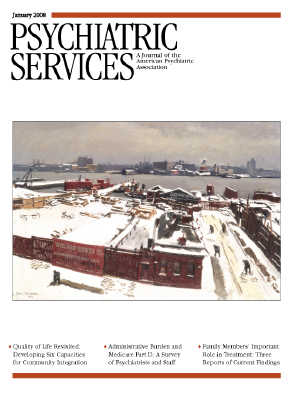Psychiatric Epidemiology: Searching for the Causes of Mental Disorders
If only all textbooks were written like this one. The authors of Psychiatric Epidemiology have assembled a highly cogent examination of the past, present, and possible future of psychiatric epidemiology, doing so in a way that anyone interested in the scientific method—including its limitations—can be immersed.
As expected, the chapters follow each other logically. But here, the sequence progressively draws us into a tale of the discipline's evolution. The authors have developed a coherent vision such that any researcher, policy maker, clinician, or program planner can understand psychiatric epidemiology. Using factor analysis of risk as a foundation, they lead us on a journey through experimental design and then, with great clarity, to the basic tenets of statistical analysis. In illustrating their themes, the authors use examples of major psychiatric epidemiologic studies, weaving them through the topical phases of the book to illuminate technical practice while also addressing the studies' importance.
A section on experimental methodology in biological psychiatry is of interest to psychiatrists. While laying out relevant case-control design, the textbook frankly discusses historical differences between biological and epidemiologic researchers, noting how they have been respectively caricatured as excessively reductionistic and overly focused on social causality. Instead, the book's contributors reach for integration, positing disease as a phenomenon with interacting proximate (neurobiological) and more distal (often environmental) antecedents.
The quest for integration reaches a high order in the sections that explore new trails. There is great detail in describing how genetic epidemiologists search for environmental risk factors among phenotypes and endophenotypes and then relate them to genetic changes. Discovering the relationship between some people of holding the APOE4 allele and the appearance of Alzheimer's disease is cited as a way in which epidemiologic family case-control studies are critical to uncovering a cause of illness. This holds promise for other disorders, such as schizophrenia, that have sketchy and complex genetic and environmental relationships.
Finally, causal complexity is the book's watchword, and the lucid discussion of this issue is its greatest conceptual contribution. The authors grapple with challenges in measuring risk factors that are rarely static. In the book's beginning, the authors orient us to a concept of "insufficient but necessary" causes that conspire to yield disease. They build on this methodically toward the book's final section and identify a developing movement throughout science to somehow quantify nonlinear and nontemporal causative effects, invoking chaos, systems, and nonlinear dynamics theories. The authors do not pretend to hold the solution to this problem, but they take the critical step of recognizing reality and stress that linearity and gross causative factors are simplistic. Hence, for the psychiatric epidemiologist, environmental events occur, individuals interact even within populations to alter risk factors, and cohorts are affected in different ways and at different times across the life cycle. Add to this a certain cultural fluidity of psychiatric disorder. The challenge is to capture new ways to measure these effects and more precisely identify the emergence of disease.



